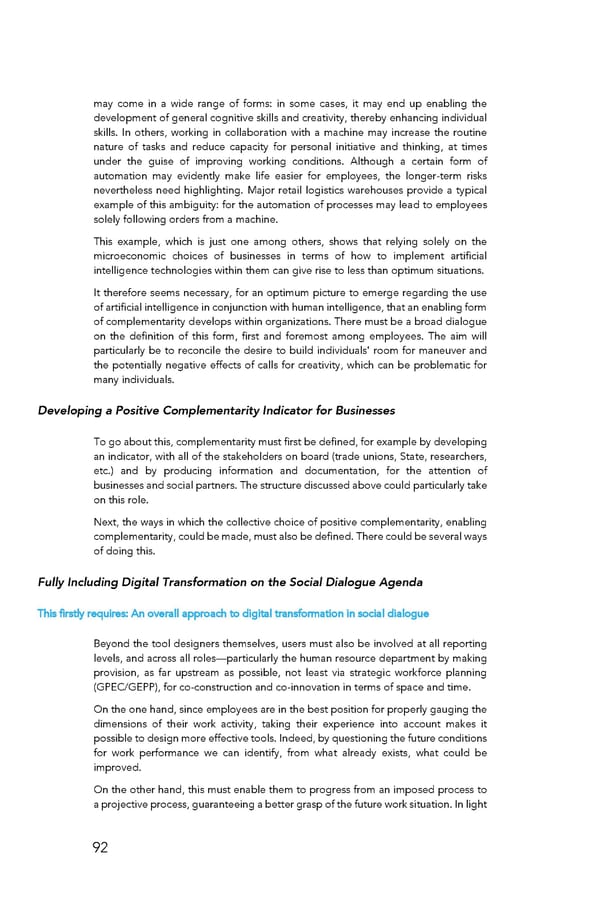may come in a wide range of forms: in some cases, it may end up enabling the development of general cognitive skills and creativity, thereby enhancing individual skills. In others, working in collaboration with a machine may increase the routine nature of tasks and reduce capacity for personal initiative and thinking, at times under the guise of improving working conditions. Although a certain form of automation may evidently make life easier for employees, the longer-term risks nevertheless need highlighting. Major retail logistics warehouses provide a typical example of this ambiguity: for the automation of processes may lead to employees solely following orders from a machine. This example, which is just one among others, shows that relying solely on the microeconomic choices of businesses in terms of how to implement artificial intelligence technologies within them can give rise to less than optimum situations. It therefore seems necessary, for an optimum picture to emerge regarding the use of artificial intelligence in conjunction with human intelligence, that an enabling form of complementarity develops within organizations. There must be a broad dialogue on the definition of this form, first and foremost among employees. The aim will particularly be to reconcile the desire to build individuals' room for maneuver and the potentially negative effects of calls for creativity, which can be problematic for many individuals. Developing a Positive Complementarity Indicator for Businesses To go about this, complementarity must first be defined, for example by developing an indicator, with all of the stakeholders on board (trade unions, State, researchers, etc.) and by producing information and documentation, for the attention of businesses and social partners. The structure discussed above could particularly take on this role. Next, the ways in which the collective choice of positive complementarity, enabling complementarity, could be made, must also be defined. There could be several ways of doing this. Fully Including Digital Transformation on the Social Dialogue Agenda This firstly requires: An overall approach to digital transformation in social dialogue Beyond the tool designers themselves, users must also be involved at all reporting levels, and across all roles—particularly the human resource department by making provision, as far upstream as possible, not least via strategic workforce planning (GPEC/GEPP), for co-construction and co-innovation in terms of space and time. On the one hand, since employees are in the best position for properly gauging the dimensions of their work activity, taking their experience into account makes it possible to design more effective tools. Indeed, by questioning the future conditions for work performance we can identify, from what already exists, what could be improved. On the other hand, this must enable them to progress from an imposed process to a projective process, guaranteeing a better grasp of the future work situation. In light 92
 For a Meaningful AI - Report Page 92 Page 94
For a Meaningful AI - Report Page 92 Page 94